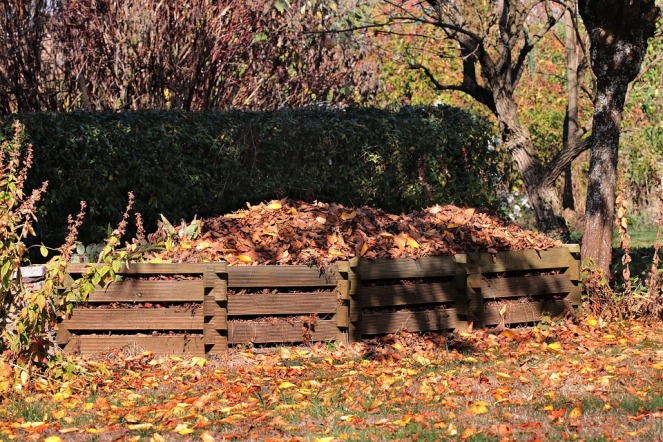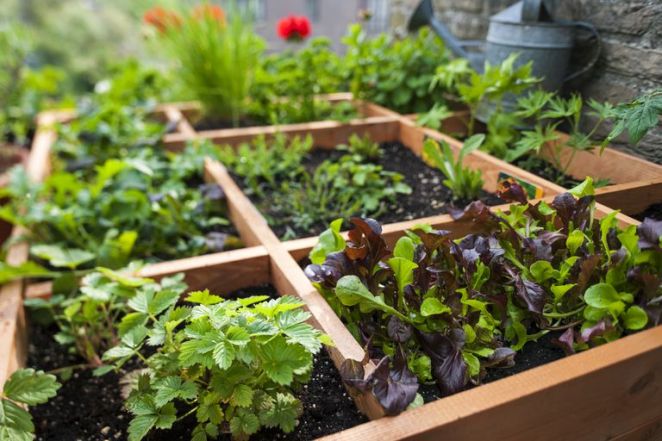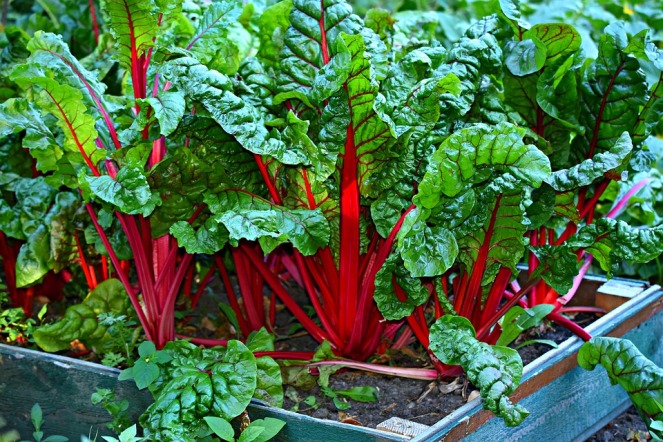If you are a keen gardener, you might be on the lookout for more sustainable practices that will help you protect the environment and the ecosystem surrounding your property.

There are plenty of ways you can do more for the wildlife and reduce the amount of waste you produce in your home. Below you will find a few tips that are easy to implement and can improve your practices and the life of animals and plants in the garden.

Natural Composting
If you don’t have a compost box yet, chances are that you can reduce your use of synthetic fertilizers, as well as your household waste. You can create your own compost box in the garden and start buying produce with biodegradable wrapping and packaging. You can decrease your home’s carbon footprint and make some organic compost so you can have a healthier produce all year round. It is hard to believe how much vegetable and fruit trash we actually utilized as a compost material instead of throwing it into the trash. Minimizing guilt of clogging our planet, our compost pile or literally dug up designated hole in the ground served as a constant power source for the vegetable plant in the garden. Plastic compost bin somehow did not produce the desired effect of decomposed scraps compared to the dug up pile. As gardeners, we know, there is never enough conditioning or nutrients that can be applied as fortifiers to your planting efforts. Hope you, guys try it and let me know what you how it goes.
Rainwater Collection
Of course, gardeners use a lot of water, especially in the summer. With the water shortage around the world, you can do something for the environment by collecting rainwater and designing a smart irrigation system. Instead of using the sprinklers, you will be able to get the pipes to deliver the water to the roots directly and reduce the amount you need. In the hot weather, like here in Florida, the majority of the water coming from the sprinklers will evaporate or might be heavily restricted by local government to be used only in certain times Rain barrels are a wonderful sustainable addition to your backyard that promotes a natural collection of water that is easily utilized in your gardening. Find out more about rainwater collection at https://www.nationalpolyindustries.com.au/ so you can make your garden more sustainable and cheaper to run.

Wildlife Refuge
They teach us in Master Gardening school that we need to plant enough for humans and enough for wild life. At first, I resisted that idea, but after expending the garden and fruit orchard, the armadillos and squirrels do not compete with my vegetable crops any longer. All the avocados that one tree produced fed the whole neighborhood of the wild life. It sure feels nice to look after the wildlife in and around your garden, not just your family members. Also, you can make safe havens and hiding places, set up bee sanctuaries, and create natural hiding places for hedgehogs and small mammals. Look after the birds in your garden by providing them with bushes, shrubs to nest in, trees to hop on and flowers to feed on. They will, in turn, take care of the insects in your garden and fertilize your soil.

Square Foot Gardening
The next thing you can do to reduce the impact of your gardening and your home on the environment is reducing the use of machinery. If you haven’t tried square yard gardening yet, it might be time to give it a go. It makes it easy to plan your vegetable patches and reach them safely, maximizing the space in your garden. This means that you don’t need a petrol mower or hedge cutter, either. The French practiced it for centuries and now this simplified gardening trend is gaining popularity all over the world. Instead of pooling weeds in your unused garden space, the square yard gardening method will allow homegrown crops to produce high yields.

There are many ways you can make your garden more sustainable. Hope the information in this post was helpful and interesting.
Have a very green day, my friends.
Luda@PlantsandBeyond🌿
Photographs listed here do not belong to Luda @PlantsandBeyond.com
©PlantsandBeyond.com


Sound gardening advice! I already use some of your ideas in my own yard such as composting, using pollinators and collecting rainwater. The hardest thing for me is protecting my garden from the many deer, voles and rabbits in the area. They love my plants as much as I do!
LikeLiked by 1 person
Nancy, you are doing amazing. That is wonderful that you are utilizing all the sustainable practices. Yes, deers are such pests. What I found in my own practice, that no matter how many sprays, cayotee urine, soap, blood granuals or deterents we applied, once we installed the physical fense all the animals taking different rout. Even the voles and rabbits. That fense has to be one foot inserted into the ground. After that -no one even dares to exsert enough energy to dig under….Hope this is helpful.
LikeLiked by 1 person
The only thing that keeps them out is a physical barrier.
LikeLiked by 1 person
Oh my goodness this was so jammed pack with info. We do already compost and we do already do square foot gardening” using two raised beds (but I did not know that is what it was called). I read the link you had on Square Foot gardening and I did not realize “you should never grow the same crop in the same botanical family in the same soil year after year”. I am going to save that link for future reference – thanks 🙂
LikeLiked by 1 person
Ahhhhh, sooooo happppyyy, Tierney. Send me pict of your beautiful work. Wow. That is just wonderful news to read in the morning. Yes, same crops deplete the soil, so they have to be rotated. Lots of huuuuuuggs and kiiiissses.
LikeLike
My beautiful work is over for the season – we live in Central Oregon and we have now composted the rest of our raised beds. We did have an incredible non stop kale harvest that went on for months! I spent $2.99 on a kale start and must I gotten like $80+ in Kale out of it. Kale hung on way past the end of our growing season in the high desert.
LikeLiked by 1 person
I can only imagine. What did you do with so much kale? I froze most of it and use it in smoothys.
LikeLiked by 1 person
I make a kale sausage stew that I love – we had it once a week! Here is the recipe https://www.realsimple.com/food-recipes/browse-all-recipes/bean-sausage-stew
LikeLiked by 1 person
Oh wow !!! Thank you so much for sharing !!!! I love this magazine too 💐🤗🌷🌿
LikeLiked by 1 person
I am on the same wavelength as Nancy. Your garden tips are very useful and I already use most of them including the idea of raised garden beds. But we live in deer country. My solution was to build around our garden a fence high enough so they can’t jump over it. As cute as deer are to look at, we cannot let them eat our vegetable. Have a great weekend, Luda!
LikeLiked by 2 people
Totally agree. The deer fense is the only deterent that actually workded for me too. You too, Peter. Have a great weekend and say hi to Bien
LikeLiked by 1 person
These are some great thoughts!
LikeLiked by 1 person
Thank you so much, Melissa
LikeLiked by 1 person
Excellent post!
LikeLiked by 1 person
Thank you dear Valerie and thank you for reading
LikeLike
Thank you so much for helpful and interesting information! 🙂 ❤
LikeLiked by 1 person
❤️Manuela, thank you for your kind comment☀️🌷🌸🌷☀️
LikeLiked by 1 person
You are more than welcome!☀️<3☀️
LikeLiked by 1 person
✨💐✨💐✨💐✨
LikeLike
A wonderful post with some great ideas.
LikeLiked by 1 person
Thank you, Rupali.
LikeLiked by 1 person
Composting right is a fine art that more people should aspire to! 🙂
LikeLiked by 1 person
Thank you, Tom.
LikeLike
Great ideas and advice. Just today, I was talking to Mom about composting.
LikeLiked by 1 person
How cool. Great timing, then.
LikeLike
wonderful! I started a composting bin in mid-summer and then some weeks later took scrap lumber to frame a raised bed/ composting box. A week ago I transplanted a pear tree (bare root this past Spring) into the mix and then into a half barrel using the compost mix. I’m trying to make more compact garden beds -in the space I have not already with ornamentals or fruit trees. You are my muse for taking this to the next level!
LikeLiked by 1 person
OH MY Goodness. This is the best morning blessings I could have ever read. Thank you so much for brightening my Sunday, Notdonner. Wow, I am so overjoyed- thanks to you!
LikeLike
Wonderful informative post Luda.. Loved the photos and have been to pick some Chard for our Sunday Lunch today ..
Now I really should update my garden blog … 🙂
Wishing you a wonderful weekend.. ❤ and great week ahead.. ❤
LikeLiked by 1 person
Oh wow, What will you cook with chard? I looooove the harvest. Thank you for your comment, dear Sue. Have an amazing Sunday
LikeLike
Luda another post of wisdom. Water conservation is very important and planting. Providing for the wildlife important they are our extended family. We have taken their habitat so wrong must feed them. Love the photos. Blessings
LikeLiked by 1 person
Blessings back to you, dear Nanette. Thank you kindly for all your encouragment.
LikeLiked by 1 person
Oh, MY, your blog has such grand info.
So, your compost pile is just a hole in the ground? How do you get to the rich breakdown with new stuff piled on top? Does it smell? Do you put yard clippings in it, too?
LikeLiked by 1 person
Ahhhh, this is so nice to hear, Hinoeuma. Thank you very much. We digged holes in the ground-and we dig extra when we have enough compost to add on. I fill it with kitchen scraps and then turn it daily. I don’t smell it, although I am very sensitive to any smells… my dogs find it, so we added a tiny fence there. I don’t put yard clippings, but you certainly can. The key is to have sunshine, moisture and turning it daily. It really worked for me so far.
LikeLiked by 1 person